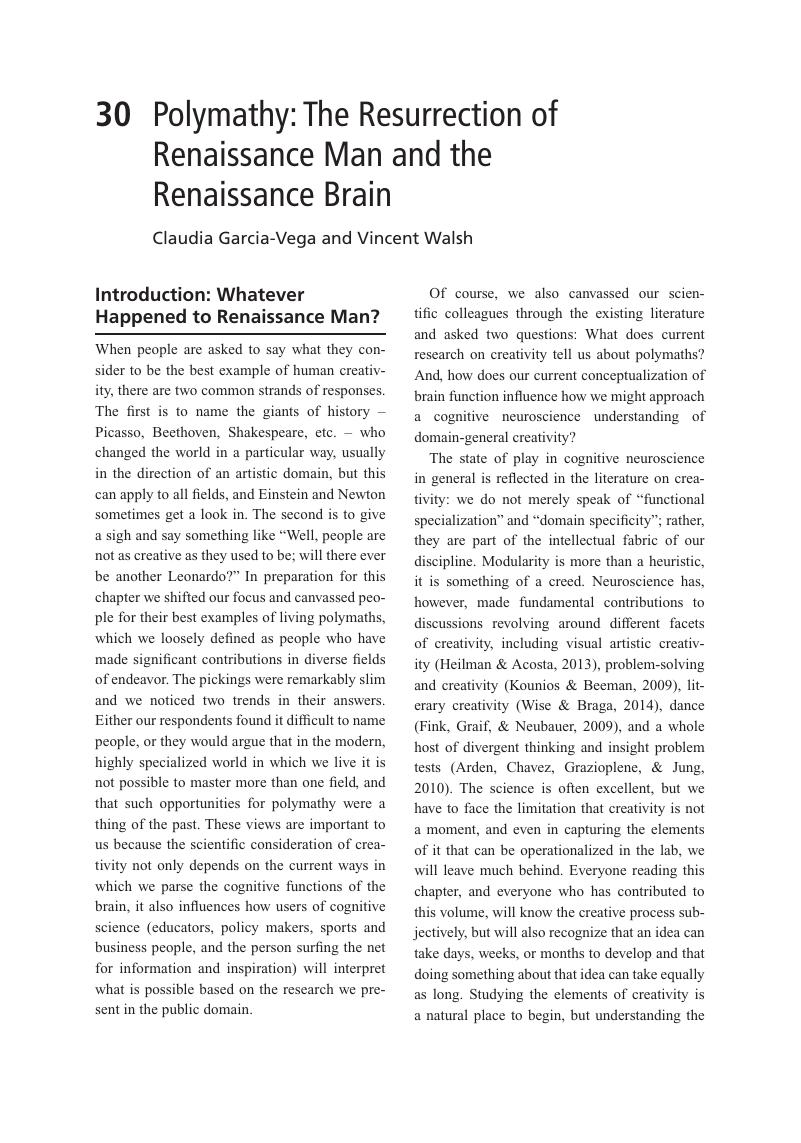Book contents
- The Cambridge Handbook of the Neuroscience of Creativity
- The Cambridge Handbook of the Neuroscience of Creativity
- Copyright page
- Contents
- Figures
- Tables
- Contributors
- Acknowledgments
- Introduction
- Part I Fundamental Concepts
- Part II Pharmacology and Psychopathology
- Part III Attention and Imagination
- Part IV Memory and Language
- Part V Cognitive Control and Executive Functions
- Part VI Reasoning and Intelligence
- Part VII Individual Differences
- Part VIII Artistic and Aesthetic Processes
- 28 The Neuroscience of Musical Creativity
- 29 Artistic and Aesthetic Production: Progress and Limitations
- 30 Polymathy: The Resurrection of Renaissance Man and the Renaissance Brain
- Index
- References
30 - Polymathy: The Resurrection of Renaissance Man and the Renaissance Brain
from Part VIII - Artistic and Aesthetic Processes
Published online by Cambridge University Press: 19 January 2018
- The Cambridge Handbook of the Neuroscience of Creativity
- The Cambridge Handbook of the Neuroscience of Creativity
- Copyright page
- Contents
- Figures
- Tables
- Contributors
- Acknowledgments
- Introduction
- Part I Fundamental Concepts
- Part II Pharmacology and Psychopathology
- Part III Attention and Imagination
- Part IV Memory and Language
- Part V Cognitive Control and Executive Functions
- Part VI Reasoning and Intelligence
- Part VII Individual Differences
- Part VIII Artistic and Aesthetic Processes
- 28 The Neuroscience of Musical Creativity
- 29 Artistic and Aesthetic Production: Progress and Limitations
- 30 Polymathy: The Resurrection of Renaissance Man and the Renaissance Brain
- Index
- References
Summary

- Type
- Chapter
- Information
- The Cambridge Handbook of the Neuroscience of Creativity , pp. 528 - 539Publisher: Cambridge University PressPrint publication year: 2018
References
- 1
- Cited by



